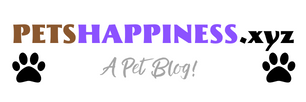HAVE YOU EVER WONDERED WHY DOGS HAVE BEARDS?

If you live with dogs, you've probably noticed your dog's whiskers -- the tough, rough hairs that stick out from the hair around the nose and eyebrows. When your dog expresses affection or wishes to you (like begging for the last piece of food on your plate), you can pay special attention to them. So, why do dogs have whiskers? They are part of an important sensory system that helps dogs navigate their environment.
What are a dog's whiskers?
Whiskers are sensory hairs, also known as tentacles, tactile hairs, or sinus hairs. They are structurally different from the coats that make up your dog's coat, not only in shape, thickness, and sturdiness but also in how they connect to your dog's body and brain. Whiskers are located only on the dog's face and can be found above the eyes, around the nose, under the chin, and on the cheeks. Since dogs use their faces and noses to gather various information about their world, it makes sense to grow whiskers in these areas to provide additional sensory input. 1
A dog's fur is designed to protect the skin and regulate body temperature, while the whiskers are uniquely designed to pick up when lightly touched and transmit that sensation to the dog's brain. These special tactile hairs are so sensitive that they can sense small changes in the movement of the air around the dog's head and help the dog estimate size, shape, and distance of objects. around.
Dog whisker anatomy
The unique anatomy of the beard is responsible for its sensory function compared to other hair types. Hair grows from follicles, which are small sacs of cells and connective tissue in a dog's skin. The hair follicles around the antennae are much larger, with lots of blood and many nerves. This blood supply is called sinusoids (hence the hairy sinuses). When a person feels the slightest touch or pressure change, it transmits that pressure to the blood sinuses, where it is amplified and transmitted to the brain via sensory nerves. 1 This results in a rapid response system.
There are also differences in the types of muscles that move the beard. You may have seen your dog's hair stand up along its back when scared or startled. It's an involuntary response to smooth muscle movement under the skin -- similar to how people get goosebumps. In contrast, whiskers are connected to the striated muscle, which is involved in voluntary movements. 1 The dog can control the movement of the whiskers, moving and stretching the whiskers as needed.
Whiskers develop very early in a dog's embryonic stage and appear before any other coat. 1 As a result, whiskers can play an important role in newborn puppies that they don't see for ten years. The first days of life, such as finding the mother and locating nipples for breastfeeding.
What's the use of a dog's whiskers?
Whiskers help dogs perform a variety of important functions, including:
Find your way in the dark
Navigate in tight or confined spaces
Distinguish nearby objects with unreliable vision
Find food and water
Identify threats in your environment
Express interest or curiosity
Detects wind direction to locate scents
Pick up small objects with your mouth
Whiskers also protect the eyes and face from injury by triggering reflex responses, such as blinking when something touches the antennae above the eyes. Whiskers let the dog know before there's a sharp stick or branch near the face, which can save the dog from injury.
For blind or senior dogs with vision loss due to aging, whiskers are important for these dogs to continue to move comfortably around the house.
The dangers of removing a dog's whiskers
Whiskers may not look like much to the naked eye, but they are essential for dogs to avoid danger and move safely in their environment. Dogs with whiskers removed are more likely to be injured, and dogs without whiskers can bump into walls and corners. Whiskers should not be removed unless there is a medical reason, as they serve important sensory functions in dogs. So it's like treating a wound or abscess.
NOTE: Never trim (unless there is a medical reason), trim, shave, pull, pluck, or handle beards roughly, as this can be painful for the dog.
While the whiskers themselves are not painful to cut because there are no nerves in real hair, dogs can still experience discomfort when the whiskers are cut or shaved. Dogs with trimmed whiskers have difficulty picking up balls and have been observed dropping the ball soon after picking it up - a sign of discomfort that could be due to missing or short whiskers.
Dogs sometimes get damaged or lose their whiskers here and there, but as long as the follicles under the skin are not damaged, the whiskers will grow back.
Dogs rely on whiskers to keep them aware of their surroundings, and it's important to never deprive them of their vital sense organs. The next time you see your dog sniffing or exploring, you'll learn about the amazing interplay of senses that help your dog understand the world accurately.

:strip_icc():format(jpeg)/kly-media-production/medias/1766570/original/054901800_1510313700-521085904.jpg)


Post a Comment